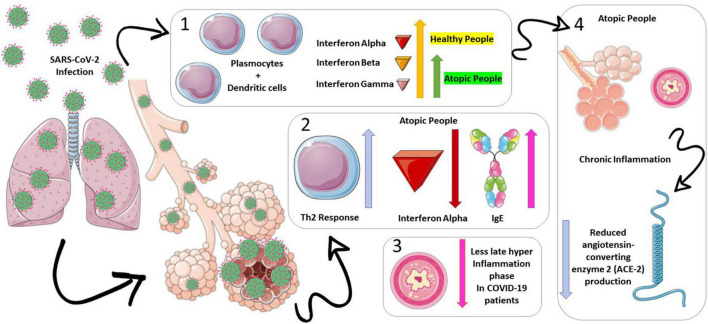FIGURE 1.
Physiopathology hypothesis on asthma’s protective mechanisms for death on coronavirus disease (COVID-19) infections. Atopic patients have a low production of interferons alpha (represented in red), beta (represented in orange), and gamma (represented in purple), which constitutes an inadequate antiviral defense (section 1 of the figure). In this scenario, lower interferon productions (mainly alpha) lead to a predominance of the Th2 response over the Th1 in patients with asthma (section 2 of the figure). This predominance may be protective, as it can downregulate the late phase of hyperinflammation in patients with asthma, which is a hallmark of severe respiratory viral infections (section 3 of the figure). Moreover, the inflammatory environment of the bronchoalveolar system in patients with asthma could result in a decrease in the expression of the angiotensin-converting enzyme 2 (ACE-2) (represented in blue), a known severe acute respiratory syndrome coronavirus 2 (SARS-CoV-2) binding receptor, due to interleukin-13 eosinophil recruitment (section 4 of the figure).

